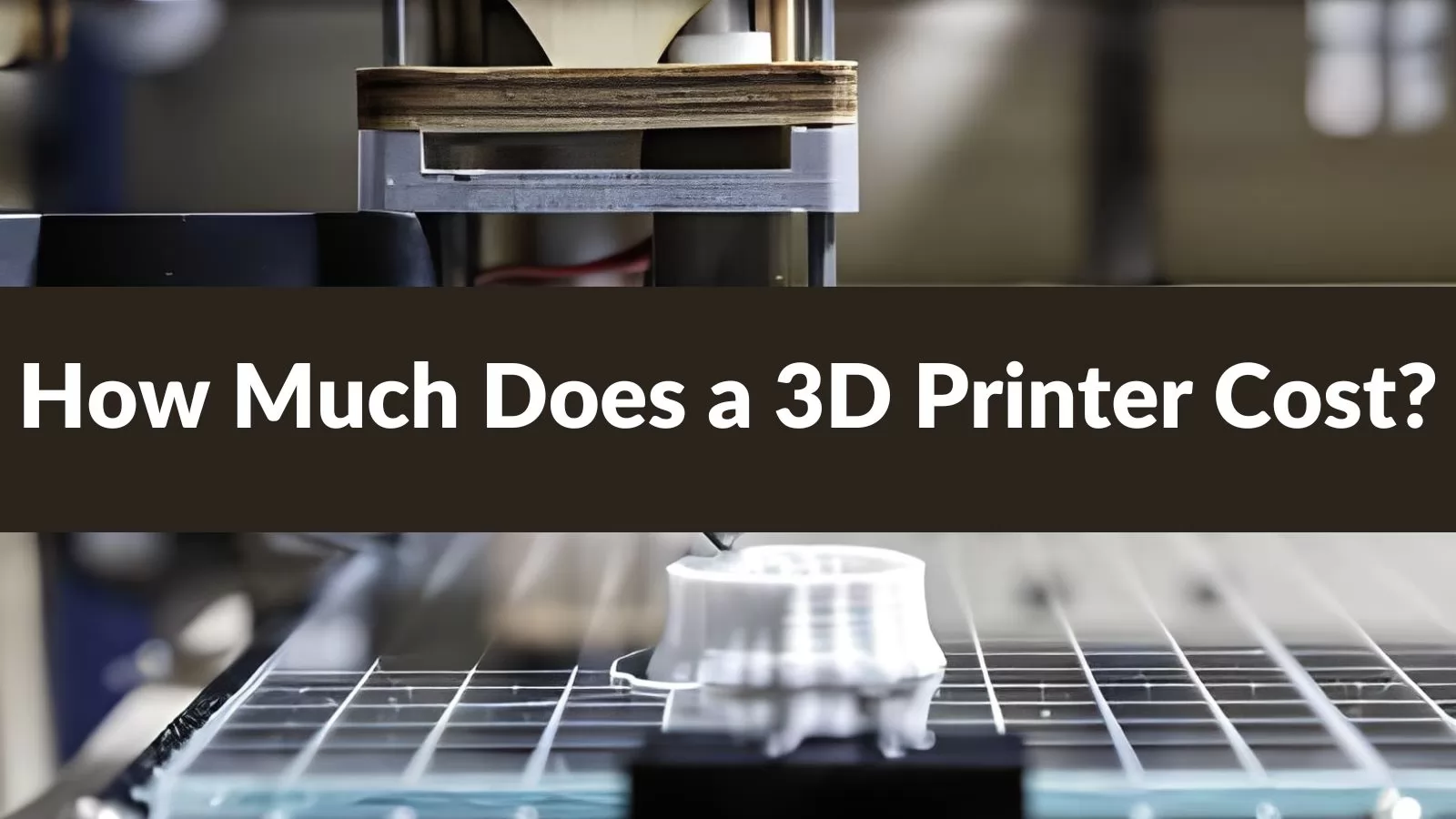
3D printer pricing varies widely based on type, functionality, and intended use. Understanding the factors that affect cost is essential for consumers looking to invest in 3D printing technology.
How Much Does A 3D Printer Cost?
The price of a 3D printer varies widely and depends on factors such as the size, type, brand, and features. Entry-level consumer models can start as low as $200, while industrial-grade printers can soar well above $10,000.
Purchasing a 3D printer requires careful consideration beyond just the sticker price. The total cost reflects not only the initial acquisition but also long-term expenses such as materials, maintenance, electricity costs, and potential upgrades. When evaluating options for a 3D printer, prospective buyers must weigh these factors against their specific printing needs and budget constraints. While hobbyist models are more affordable, they may lack the precision or capability required for professional projects. Conversely, high-end printers offer superior quality outputs and speed but come with increased costs that may not be justifiable for casual users.
| Factor | Price Range | Notes |
|---|---|---|
| Consumer-grade 3D Printers | $200 - $4,000 | Entry-level for hobbyists; moderate print quality |
| Professional-grade Fused Deposition Modeling (FDM) | $1,500 - $6,000 | Middle range; suitable for prototyping |
| Stereolithography (SLA) Printers | $2,500 - $10,000+ | Higher resolution prints; used in dentistry and jewelry |
| Selective Laser Sintering (SLS) | $5,000 - $100,000+ | Industrial usage; capable of printing with various materials |
| Metal 3D Printers | Over $10,000 | Premium segment; metal printing for industry-specific needs |
Cost and Considerations for Different Types of 3D Printing Processes
Plastic 3D Printer Costs
Plastic 3D printer costs can significantly vary based on a range of factors including the printing technology used, build volume, precision, and speed. Entry-level fused deposition modeling (FDM) printers are typically the most affordable, often starting from $200 for basic models, while professional-grade options can reach several thousand dollars. Stereolithography (SLA) printers provide higher resolution prints and their cost starts slightly higher than FDM printers; entry-level models might be around $500 with high-end systems extending well into tens of thousands of dollars. Selective laser sintering (SLS) printers command a premium due to their intricate printing capabilities and industrial use, usually ranging from $5,000 for smaller desktop versions to over $100,000 for large-format professional machines.
When considering the purchase of a plastic 3D printer, it’s crucial to weigh both the initial investment and ongoing operational expenses. This includes accounting for material costs—since different technologies may require different types or grades of plastic—and potential maintenance fees that could accrue over time due to wear and tear. Additionally, energy consumption should be factored in as specialized printers like SLS devices often demand more power than their FDM or SLA counterparts.
| Type | Initial Cost Range | Ongoing Costs | Best For |
|---|---|---|---|
| Entry-Level FDM Printers | $200 - $1,500 | Low | Hobbyists & Small-scale Prototyping |
| Professional FDM Printers | $1,500 - $6,000 | Moderate | Small Businesses & Education |
| Entry-Level SLA Printers | $500 - $5,000 | Moderate | Detailed Models & Artistic Projects |
| Professional SLA Printers | $5,000 - $50,000+ | High | Dentistry & High-Precision Engineering |
| Desktop SLS Printers | $5,000 - $20,000 | Moderate to High | Innovative Startups & Research |
| Industrial SLS Printers | Over $100,000 | High | Automotive & Aerospace Industries |
Fused Deposition Modeling (FDM) Costs
The cost of Fused Deposition Modeling (FDM) 3D printers varies widely based on factors such as print volume, precision, and speed. Entry-level consumer FDM printers can start from as little as $200, making them accessible for hobbyists and beginners. On the other hand, professional-grade machines that offer larger build volumes, superior material options, and enhanced precision can range from $2,000 to over $20,000.
When considering the purchase of an FDM printer, it’s critical to assess not just the initial price but also the ongoing costs associated with its use. The type of materials (commonly thermoplastic filaments such as ABS or PLA), their quality, and how frequently they need to be replaced will greatly impact overall expenses. Furthermore, maintenance costs like replacement parts and optional upgrades should be factored into the total investment.
Labor costs are another aspect that could affect the FDM 3D printing budget if operation and post-processing require skilled technicians. Although many FDM printers have intuitive designs aimed at ease-of-use for casual users, complexity increases with professional models necessitating knowledgeable operators for maintenance and troubleshooting.
It is also prudent to consider that while low-end printers are affordable, investing in a higher-priced model might yield savings in the long term due to durability, reliability, higher print success rates, and more cost-efficient material management.
| Cost Factor | Description |
|---|---|
| Initial Purchase Price | From around $200 for basic models up to $20,000+ for advanced models |
| Material Costs | Varies based on filament type and usage; some common thermoplastics are relatively inexpensive |
| Maintenance & Replacement Parts | Includes regular servicing costs plus any replacements needed due to wear or upgrade requirements |
| Labor | Depends on whether operation requires specialized knowledge or if it can be managed by non-experts |
| Potential Upgrades | Optional improvements that might be desired over time |
| Long-term Reliability | Investment in more robust systems may lead to lower long-term costs despite higher initial outlay |
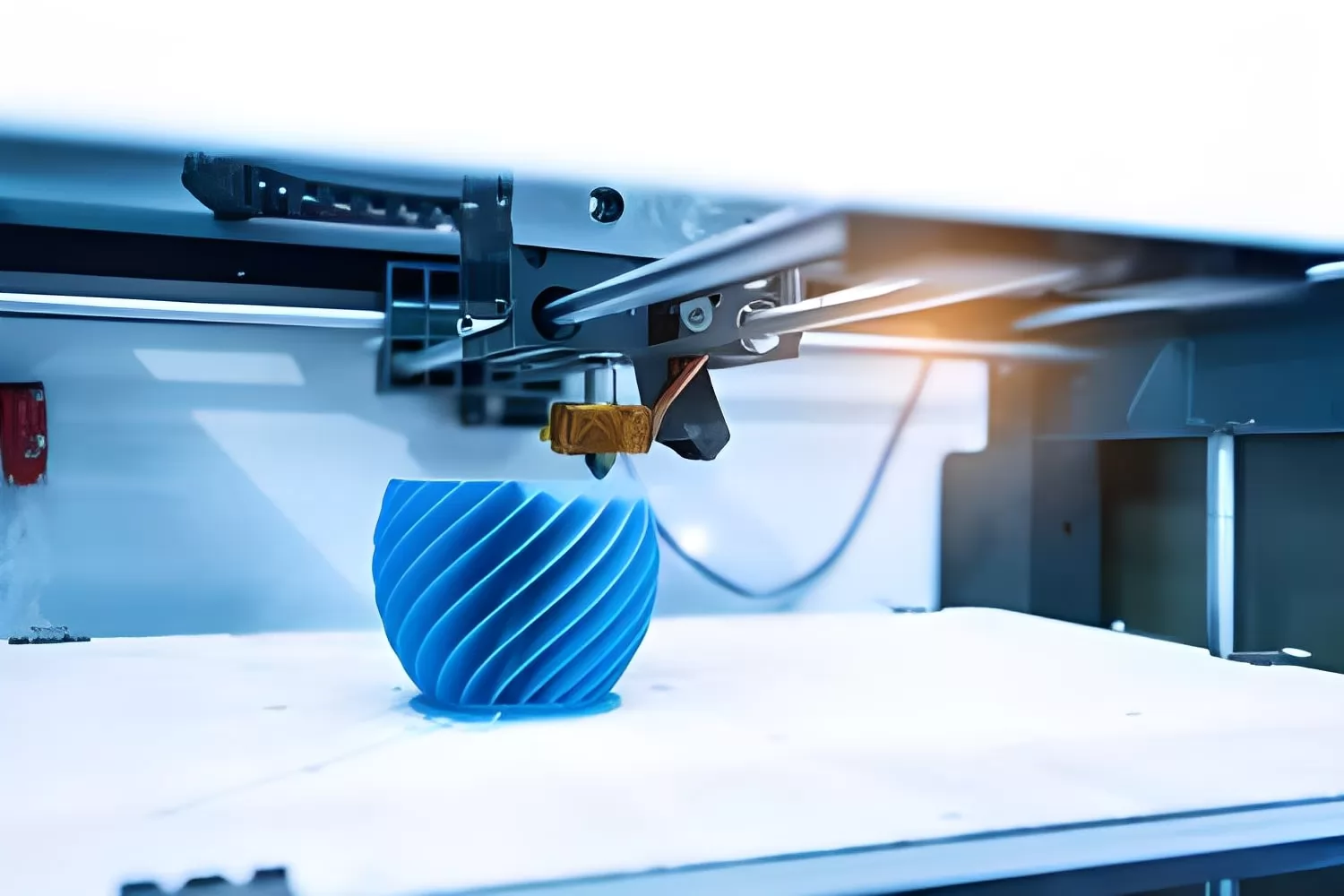
Stereolithography (SLA) Costs
Stereolithography, commonly known as SLA, is a 3D printing technology that uses a laser to cure liquid resin into hardened plastic in a process called photopolymerization. The cost of SLA 3D printers varies significantly based on factors such as the printer’s size, precision, build volume, and feature set.
When it comes to professional-grade SLA machines, prices typically start at around $3,000 and can soar well above $100,000 for more advanced industrial models. This price range reflects the intricate construction of SLA printers which are often equipped with high-precision lasers, sophisticated optical systems, and fine control mechanisms. The relatively high cost is justified by the superior surface finish and detail resolution these printers can achieve compared to other plastic 3D printing methods.
Desktop SLA printers cater more towards hobbyists or small businesses and are notably less expensive. They generally range from approximately $1,000 up to few thousands depending on their capabilities and brand reputation.
It is crucial for potential buyers to consider not just the upfront costs but also ongoing expenses. These include the cost of resin which can vary from $50 per liter for standard materials up to several hundred dollars for specialized resins engineered for specific mechanical properties or applications. Additionally, since the cured resin parts may require further post-processing like washing and curing units add extra cost implications.
| SLA Printer Type | Initial Cost Range | Common Uses |
|---|---|---|
| Desktop | $1,000 – several thousand | Hobbyists, small businesses |
| Professional | From around $3,000 | Prototypes, dentistry models, complex designs |
| Industrial | Upwards of $100K | High-end manufacturing applications |
| Resin Cost | $50 - several hundred/liter | Material selection depends on part requirements |
Selective Laser Sintering (SLS) Costs
Selective Laser Sintering (SLS) is a 3D printing technology that generally comes at a higher price point due to its sophisticated laser system and the need for fine powder materials. It offers strong, durable parts and can handle complex geometries with ease.
SLS printers are typically more expensive than their FDM or SLA counterparts, reflecting the advanced nature of the technology and the quality of components required for operation. Initial costs for entry-level SLS machines start from around $5,000 to $10,000 but can quickly rise above $200,000 for industrial-grade models that offer larger build volumes, higher precision, and faster print speeds.
The cost of SLS equipment also implicates additional investments in powder handling infrastructure and safe ventilation systems due to the fine particles in use. Maintenance and operational costs must also be considered; these include the cost of the laser sintering power source replacement and ongoing software licensing fees if applicable.
Materials such as nylon powders vary in price but tend to be more costly than standard FDM filaments. The cost effectiveness becomes more apparent in batch production where per-part costs can decrease with economies of scale.
While labor costs may not be significantly different from other additive manufacturing processes, it is noteworthy that SLS requires skilled operators to manage both printing and post-processing operations.
| Expense Category | Cost Range | Notes |
|---|---|---|
| Entry-Level Equipment | $5,000 - $10,000 | For basic applications |
| Industrial-Grade Equipment | $200,000+ | For large prints & high efficiency |
| Materials | Varies by supplier | Nylon powders tend to be pricier than FDM or SLA materials |
| Maintenance | Dependent on usage | Includes part replacements like laser sources |
| Infrastructure | Must accommodate safety considerations | Includes powder handling systems & ventilation |
| Labor | Comparable with industry standards | Requires training & expertise in SLS operations |
Metal 3D Printers Costs
The cost of metal 3D printers can vary significantly based on the size, complexity, and capabilities of the machine. High-end industrial metal 3D printers may range from $100,000 to over $1 million, whereas entry-level systems could start as low as $10,000.
When considering the purchase of a metal 3D printer, potential buyers should be aware that these printers represent a significant investment due to the advanced technology they employ. Metal 3D printing utilizes techniques such as Direct Metal Laser Sintering (DMLS), Electron Beam Melting (EBM), and Metal Binder Jetting. These methods require sophisticated components and materials to produce high-quality metal parts.
The initial purchase price is just one part of the overall cost equation for a metal 3D printer. Operating costs include the price of metal powders which can be quite expensive compared to plastic filaments used in other types of 3D printing. Additionally, post-processing equipment might be necessary to achieve desired surface finishes and mechanical properties.
Maintenance expenses should also be considered; specialized staff training and service contracts add further costs but are crucial for maintaining system performance over time. Energy consumption is another factor since these machines typically require more power to operate compared to their plastic counterparts.
Investing in a robust software suite capable of handling complex designs and optimizing print jobs for efficiency is equally important when calculating total ownership expenses.
| Aspect | Cost Influence |
|---|---|
| Printer Purchase Price | Varies from around $10,000 for entry-level models up to over $1 million |
| Printing Technology | DMLS, EBM, Binder Jetting - Sophisticated technologies incur higher costs |
| Materials and Consumables | The type and quantity can affect ongoing operational expenses significantly |
| Post-Processing Equipment | Additional machinery for finishing parts may be required |
| Maintenance | Regular servicing ensures longevity but at an ongoing expense |
| Training & Expertise | Specialized knowledge needed for operation adds staffing/training costs |
| Software | Advanced software tools are necessary and impact total cost |
| Energy Consumption | Higher energy requirements compared to other forms of 3D printing |
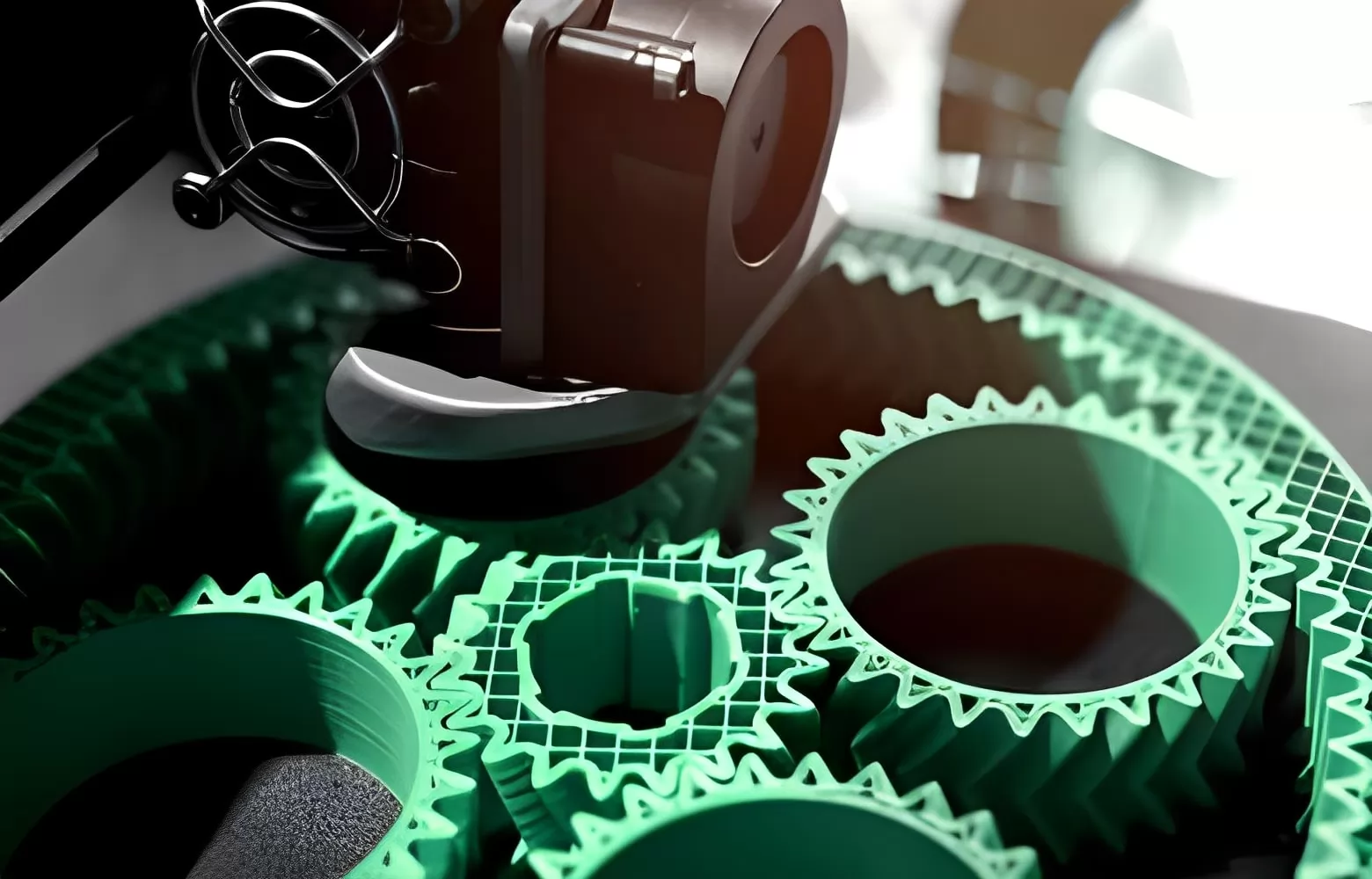
Cost Per Part: Calculating 3D Printing Costs
When considering the cost per part in 3D printing, several factors come into play. These include equipment ownership, materials and consumables, and labor. Each of these contributes significantly to the overall cost of 3D printed components and is critical for budgeting and financial planning.
Equipment ownership encompasses the initial purchase price, maintenance, repairs, and potential upgrades for a 3D printer. This can vary widely depending on the type of printer and its usage intensity. Materials and consumables are ongoing expenses that depend upon the volume of items being produced, the type of material used (e.g., plastic filaments for FDM or resin for SLA), as well as the potential need for special treatments after printing (such as curing or washing). Labor costs consider the time spent on design work, machine setup, operation, post-processing, and quality checks.
Comprehensively assessing these categories ensures an accurate understanding of what each part will cost when using 3D printing technology. It also highlights where efficiencies can be made or if alternative production methods may be more cost-effective.
| Cost Factor | Description | Considerations |
|---|---|---|
| Equipment Ownership | Includes acquisition costs, maintenance, repairs, upgrades | Depreciation, servicing frequency |
| Materials & Consumables | Involves purchasing materials like filaments or resins; may also include finishing supplies | Material type choice; bulk purchasing |
| Labor | Encompasses design time, machine handling time, post-processing operations | Skill level required; automation possibilities |
Equipment Ownership
The initial investment in 3D printer equipment ownership is a significant factor to consider when calculating overall printing costs. This includes not just the upfront cost of the printer itself but potentially also extended warranties, software licenses, and maintenance plans required for its operation.
When assessing equipment ownership, one must take into account the depreciation of the 3D printer over its useful life. The cost of the machine spreads out over the number of years it can effectively produce parts. Higher-end printers with larger build platforms and more advanced features typically entail higher initial costs but may have longer service lives or produce parts more efficiently, thereby reducing the cost per part over time.
Another aspect of equipment ownership is potential financing options or leasing agreements which might affect cash flow and tax implications for a business. These options can lower immediate expenses but may increase total expenditure over time due to interest rates or fees associated with borrowing.
Lastly, it’s essential to incorporate occasional upgrades or add-ons into long-term budgeting since technology advancements could render some aspects of a printer obsolete or less efficient compared to newer models. Ensuring that your 3D printer remains competitive often involves additional investments in hardware updates or complementary technologies.
| Ownership Factor | Description | Potential Impact on Cost |
|---|---|---|
| Initial Purchase | Upfront cost of acquiring the 3D printer. | Large upfront expense, primary component of capital cost. |
| Depreciation | The spreading out of the printer’s value over its useful life. | Determines periodical accounting costs and affects net income calculations. |
| Maintenance Plans | Costs related to maintaining optimal functionality. | Regular expense that ensures prolonged efficiency and reliability. |
| Software Licenses | Expense for software necessary for operation. | Could be recurring annual costs or one-time fees. |
| Financing/Leasing | Monthly payments if equipment is financed or leased. | Affects cash flow and total cost due to interest. |
| Upgrades/Add-Ons | Cost for additional updates or capabilities added later on. | Can be substantial but deemed necessary for staying competitive. |
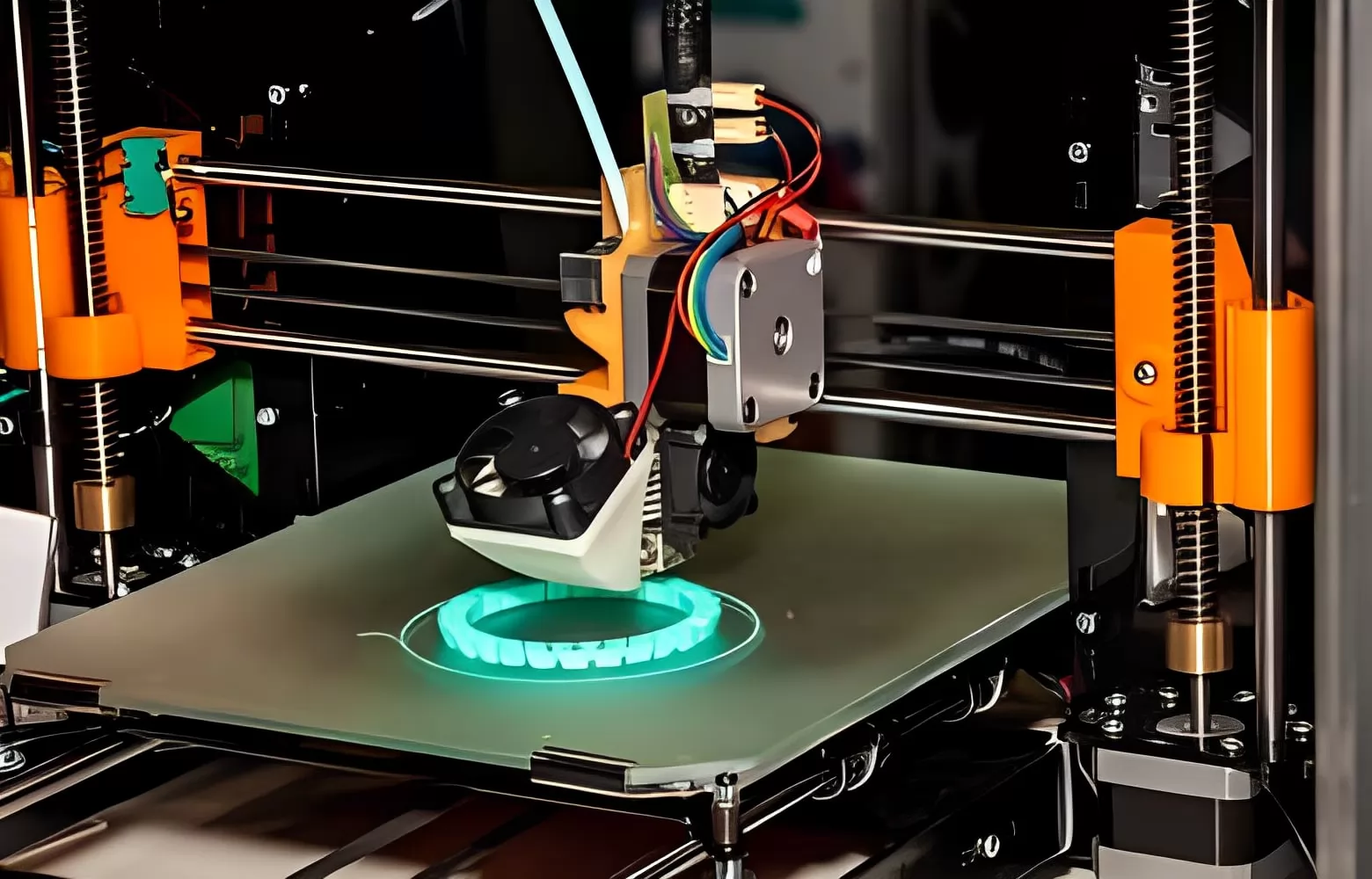
Materials And Consumables
Materials and consumables represent a significant portion of ongoing costs in the operation of a 3D printer. The cost for these supplies varies depending on the type of printing process used, material selection, and volume of production.
For Fused Deposition Modeling (FDM) printers, materials are usually thermoplastic filaments such as ABS or PLA. The price per kilogram can range from low-cost, generic options to high-grade, specialized filaments. Stereolithography (SLA) printers use photopolymer resins, which generally cost more per liter than FDM filaments but offer different properties like increased detail or strength. Selective Laser Sintering (SLS) involves powder materials, often nylon-based, which can be one of the more expensive options due to their fine quality and the requirement for unused powder to be refreshed regularly.
Moreover, it’s not only the raw materials that account for consumable costs; maintenance supplies such as solvents for cleaning SLA parts or cartridges and build plates might also need regular replacement. It is essential to consider the shelf life and storage requirements of materials and consumables when evaluating these expenses.
| 3D Printing Process | Material Type | Cost Range |
|---|---|---|
| FDM | Thermoplastic Filaments | $25 - $250 per kilogram |
| SLA | Photopolymer Resins | $50 - $500 per liter |
| SLS | Powder Materials (Nylon) | $100 - $300 per kilogram |
Labor
When calculating 3D printing costs, factoring in labor is essential. Labor costs can significantly influence the overall cost per part, especially when considering the time required for design preparation, machine setup, post-processing, and quality checks.
Labor costs in 3D printing are multifaceted and often depend on the skill level of the workforce required to operate the machines and handle post-processing. These tasks may include removing support structures, surface finishing, or additional curing. The complexity of these tasks varies based on the technology used; for instance, FDM might require less sophisticated post-processing compared to SLA or SLS which could involve more intricate clean-up stages due to their different methods of layering and curing materials.
Moreover, ongoing training for staff should be considered as part of labor costs since keeping up with technological advancements is critical in maintaining efficiency and quality standards within a 3D printing operation. It’s also important to factor in the human oversight necessary for troubleshooting any issues that occur during printing.
Effective management of labor time can lead to cost savings; automating repetitive tasks where possible while ensuring employee expertise is utilized where it’s most valuable can streamline production processes. Nevertheless, it is crucial not only to assess current labor demands but also to anticipate future needs as business scales or as new 3D printing technologies emerge.
| Aspect | Detail |
|---|---|
| Design Preparation | Time spent converting ideas into printable designs |
| Machine Setup | Initial configuration and preparation activities before commencing print jobs |
| Operation Monitoring | Supervision required during print runs to ensure proper functionality |
| Post-Processing | Cleaning up prints after production, which includes removal of supports and surface finishing |
| Quality Checks | Inspection of printed parts for defects or deviations from design specifications |
| Staff Skills & Training | Level of expertise needed for operation and maintenance; on-going training cost |
| Troubleshooting | Addressing any malfunctions or errors that occur during the printing process |
| Management | Organizational activities pertaining to personnel and task scheduling |
3D Printer Price Comparison by Process
| Feature Comparison | Fused Deposition Modeling (FDM) | Stereolithography (SLA) | Direct Metal Laser Sintering (DMLS) | Selective Laser Sintering (SLS) | Metal Extrusion |
|---|---|---|---|---|---|
| Detail Resolution | ★★★★☆ | ★★★★★ | ★★★★☆ | ★★★★☆ | ★★★★★ |
| Precision Levels | ★★★★☆ | ★★★★★ | ★★★★☆ | ★★★★☆ | ★★★★★ |
| Surface Quality | ★★★☆☆ | ★★★★★ | ★★★★☆ | ★★★☆☆ | ★★★★★ |
| Processing Speed | ★★★★★ | ★★★★☆ | ★★★☆☆ | ★★★☆☆ | ★★★★★ |
| Handling of Intricate Designs | ★★★★★ | ★★★★☆ | ★★★★☆ | ★★★★☆ | ★★★★☆ |
| User-Friendly Operation | ★★★★★ | ★★★★★ | ★★★☆☆ | ★★★☆☆ | ★★☆☆☆ |
| Maximum Build Dimensions | Up to 300 x 300 x 600 mm | Up to 300 x 335 x 200 mm | Up to 165 x 165 x 300 mm | Up to 300 x 200 x 200mm | Up to 400 x 400 x 400 mm |
| Cost Range | DIY starting at $200 to Professional $4,000 | $2,499 to $8,999 | Starting at $100,000 | $149-$200/L for materials | Starting at $200,000 |
| Operational Expenditure | $50-$150/kg for standard materials, $100+/kg for specialized | $149-$200/L for resins | $100/kg for nylon, reusable powder | Material cost varies with metal and tech | Material and facility costs are premium |
| Workforce Requirements | Mostly manual, some automatable steps | Automated post-processing | Simplified post-process cleaning | Mostly automated post-processing | Intensive post-processing |
| Material Options | Thermoplastics and blends | Various resins | Metals like stainless steel, titanium | Thermoplastics, e.g., nylon | Stainless steel, titanium, superalloys |
| Typical Applications | Concept models, low-cost prototyping | Precision prototypes, dental, jewelry | Functional parts, complex designs | Functional prototypes, production parts | Durable components, aerospace, medical |
Outsourced Production vs. In-House 3D Printing
Choosing between outsourced production and in-house 3D printing involves several factors to consider. Companies must evaluate their specific needs, long-term goals, and financial constraints to determine which option is most viable for them.
Outsourcing the production of 3D printed parts means engaging a third-party provider to handle the printing process. This can be advantageous for businesses without the expertise or resources to maintain their own 3D printers. It eliminates the need for upfront investment in equipment and training, while also offering flexibility to scale production up or down as needed without committing to long-term costs.
In contrast, in-house 3D printing provides full control over the manufacturing process, including the speed of production and the protection of intellectual property. Businesses that opt for in-house printing will incur initial costs for purchasing machines, materials, potential facility modifications, and training employees. However, they benefit from readily available access to produce parts on demand and adapt quickly to design changes or production needs.
Selecting outsourced production could mean lower cost per part at low volumes due to economies of scale offered by professional service providers. Conversely, running an in-house operation may become more economical as volume increases, despite higher initial costs.
Ultimately, each organization must carefully weigh these considerations against its operational requirements and strategic objectives before making a decision on whether to outsource 3D printing services or establish an in-house 3D printing facility.
| Consideration | Outsourcing | In-House |
|---|---|---|
| Initial Investment | Low – No need for purchasing equipment or training | High – Cost of purchasing machines & training |
| Expertise Required | Not necessary – Outsourced provider handles it | Necessary – Personnel must be trained |
| Flexibility | High – Easy scalability without long-term commitments | Limited – Dependent on owned capacity |
| Control Over Production | Limited – Dependent on provider’s schedule & capabilities | Full control |
| Speed of Production | Subjected to provider’s timelines | Potentially faster if managed effectively |
| Protection of Intellectual Property | Less control over proprietary designs | More secure with internal handling of sensitive information |
| Adaptability | Might face restrictions with rapid changes | Easier to implement immediate design changes |
| Economies of Scale (at low volumes) | Generally better due to providers’ optimized processes | Less economical until volume increases |
| Overall Long-Term Costs | Variable based on volume; may increase with higher demand | Fixed overhead but potentially reduced per-part cost at high volumes |
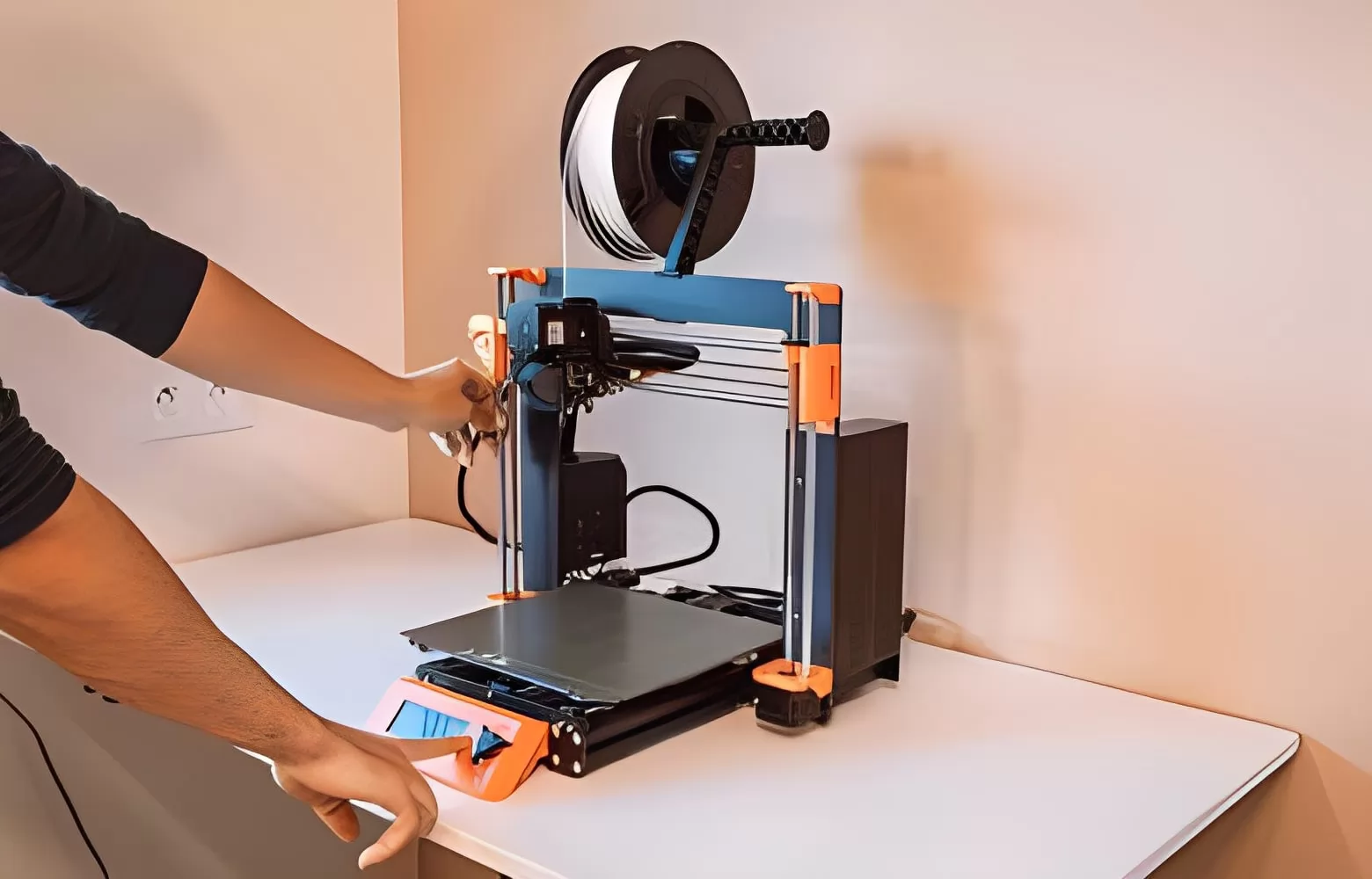
Considerations Beyond Direct Costs
When evaluating the true cost of 3D printing, it is crucial to consider factors beyond the direct costs of equipment, materials, and labor. These additional considerations play a significant role in determining the overall financial investment and operational efficiency associated with 3D printing technologies.
Indirect costs may encompass a variety of factors, such as maintenance requirements, facility modifications, software upgrades, training for personnel, machine downtime, and potential intellectual property issues. Furthermore, depreciation of equipment over time can affect the long-term return on investment. Maintenance requirements can vary widely between printer models and types; some may require regular service by certified professionals while others can be maintained in-house with minimal effort.
The suitability of a facility for housing 3D printing technology is another consideration that can incur costs. For instance, certain printers may demand specific environmental conditions such as controlled temperature and humidity levels or may need specialized ventilation systems to manage fumes or particulate matter.
Additionally, staying up-to-date with software and firmware is essential for maximizing productivity and quality output from 3D printers. Regular updates might necessitate additional expenditures if new features or improvements require payment.
Training is equally significant as personnel must be proficient in operating these advanced machines. The cost associated with educating staff members or hiring new skilled employees should not be overlooked when calculating total expenses.
Finally, 3D printing processes could impact machine downtime due to necessary calibrations, repairs, or failed print jobs leading to lost production time which translates into indirect costs.
In summary, while initial purchase prices and material costs are often emphasized when considering 3d printing investments, indirect expenses related to maintenance and operation also warrant careful consideration as they substantially affect total ownership costs.
| Indirect Cost Factor | Potential Impact |
|---|---|
| Maintenance | Can vary significantly; influences ongoing operational costs. |
| Facility Requirements | Specialized environments may need adaptations for optimal printer operation; this incurs additional expenses. |
| Software Upgrades | Necessary to maintain performance; might involve extra charges for new features or improvements. |
| Training | Essential for efficient use; requires budget allocation for instruction or skilled hires. |
| Equipment Depreciation | Affects long-term return on investment; must include consideration during purchasing decisions. |
| Intellectual Property Concerns | Could lead to legal fees or licensing costs dependent on what is being printed. |
| Machine Downtime | Calibration, repairs or failed prints increase operational downtimes adding indirect costs due to lost productivity without directly correlating to part production cost. |
In Conclusion
In conclusion, the cost of 3D printers can vary greatly depending on functionality, size, and quality, ranging from budget-friendly options suited for hobbyists to advanced systems designed for industrial use.
To find the 3D printer that best fits your needs and budget, we invite you to further explore our comprehensive selection of models. Don’t hesitate to contact us for personalized advice or to answer any questions you may have as you make this exciting investment in innovation.


